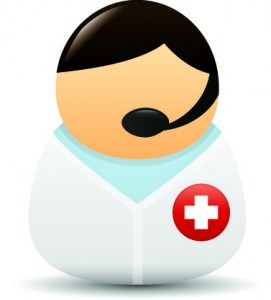Healthcare with Confidence
Transposition of the great arteries is a rare congenital heart defect in which the two main arteries (pulmonary artery and aorta) connected incorrectly – the aorta extends from the right ventricle and the pulmonary artery from the left ventricle.
Transposition of the great arteries completely changes the circulation, resulting in not getting enough oxygen by organs. Without an adequate supply of oxygen-rich blood the body can not function properly, causing the child serious complications or death in the absence of treatment.
Transposition of the great arteries is usually determined in the first hours or the first few weeks of life. Corrective surgery is usually performed immediately after birth. With proper treatment the prognosis is promising.
Symptoms: The blue color of the skin, shortness of breath, lack of appetite, poor weight gain
Development Factors
Transposition of the great arteries occurs during fetal development, when the heart muscle is formed. At risk are children, whose mothers suffered rubella or other viral illnesses during pregnancy, mothers older than 40 years or those who have diabetes.
Other factors is a family history of transposition of the great arteries or other congenital heart defects, poor nutrition during pregnancy, alcohol consumption during pregnancy, Down syndrome.
Possible complications of transposition of the great arteries include:
The lack of oxygen in tissues (hypoxia), heart failure (condition in which the heart can not pump enough blood to meet the body’s needs), lung damage.
Operation is necessary for all children with transposition of the great arteries at an early age, usually within the first week.
Surgery can cause complications such as narrowing of the arteries that supply blood to the heart (coronary arteries), heart rhythm disturbances (arrhythmias), the weakening of the heart muscle, heart failure, rupture of the heart valve. To avoid complications, the operation should be performed by an experienced practitioner of pediatric cardiac surgery.
Diagnostics
Defect likely to diagnosed before birth.
In order to help we recommend our patients to come to delivery in Israel (up to 36 weeks of pregnancy), so that child could get emergency surgery to remove congenital defect.
For the diagnosis of postpartum our experts use such procedures as:
1. A physical examination of the child
2. Echocardiography (ultrasound of the heart) – play a dynamic image of the heart, for the diagnosis of transposition of the great arteries, according to the position of the aorta and pulmonary artery. An echocardiogram may also identify other related transposition, vices, such as ventricular septal defect, atrial septal defect, patent ductus arteriosus.
3. Chest X-ray. Although it does not give a definitive diagnosis of transposition of the great arteries, it allows the physician to define the size of the heart of child as well as the position of the aorta and pulmonary artery.
4. ECG. An electrocardiogram records the electrical activity of the heart every time it contracts.
5. Coronary angiography (catheterization). This procedure is usually done only when other tests such as echocardiography do not give enough information to make a diagnosis. During catheterization, the doctor inserts a thin, flexible tube (catheter) into an artery or vein in the groin of the child and brings him to the heart. As the catheter is fed contrast agent that stains the blood vessels, which allows the physician to consider in detail the heart and blood vessels and identify any possible anomalies. This routine also measures the pressure in the heart and blood vessels of the child. Using a catheter main vessels may be mounted stent which helps to restore normal blood flow.
Surgery
Before the operation can be assigned medicines in order to strengthen the heart muscle of the child.
Balloon atrial septostomy. The procedure, which is performed if necessary the creation or enlarging of atrial septal defect, in order to facilitate discharge of oxygenated blood from left to right. To do this, the left atrium through the patent foramen ovale injected cylinder and filling it, then pulled back. This can improve the oxygen-rich blood flow to the organs of the child.
Arterial switch. Surgeons usually perform this operation in the first month of life. During surgery pulmonary artery and the aorta is restored to its normal condition and connected correctly to function properly.
If the child has an atrial septal defect it is also adjusted during operation.
After surgical correction child needs constant supervision by a cardiologist who specializes in congenital heart disease. Cardiologist may recommend the child to avoid certain activities, such as lifting weights, because they increase blood pressure and may cause damage to the heart muscle.
Most children undergoing surgery arterial switch do not need further operations. Nevertheless, for some complications, such as arrhythmia, or valvular heart failure, may require additional treatment.



